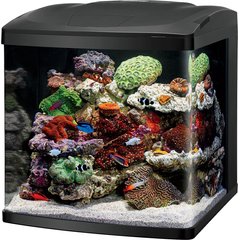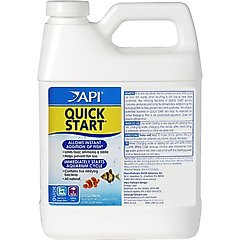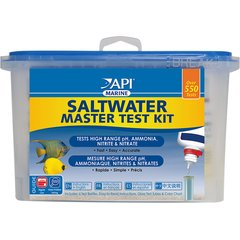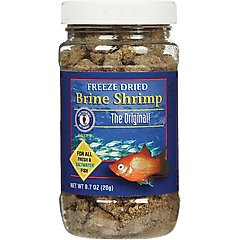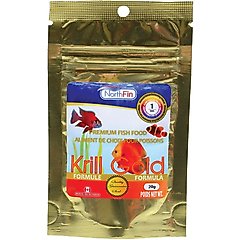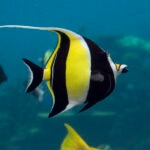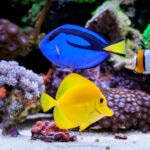Mandarin Dragonet Care Sheet
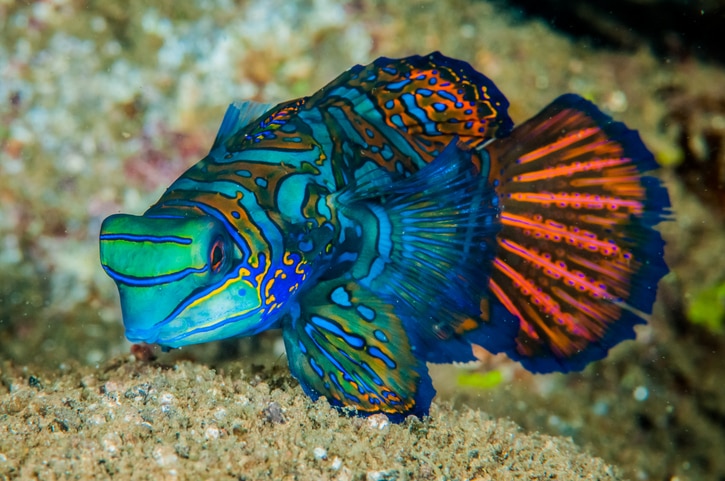
Photo by fenkieandreas/iStock/Getty Images Plus
Known for its vibrant colors and striking patterns, the mandarin dragonet (Synchiropus splendidus) is a popular pick for saltwater aquariums—especially nano reef setups. Let’s dive into the details of caring for this unique species.
Key Takeaways
- Mandarin dragonets are colorful, reef-safe fish that require a specialized diet and an established aquarium.
- A constant supply of live copepods is essential for their survival, though some may adapt to frozen or prepared foods.
- These fish are peaceful but can become territorial with other dragonets, so it's best to keep them singly or in mated pairs.
- Quarantining new mandarin dragonets before introducing them to a tank helps reduce disease risk and establish feeding habits.
Species Overview
Scientific name: Synchiropus splendidus
Lifespan: 10–15 years
Size at maturity: Up to 3 inches
Fun Facts
- Mandarin dragonets have large pectoral fins they use to glide or hover over the substrate in a dragon-like movement.
- This species’ name was inspired by the opulent robes, called mandarins, worn by high-ranking Imperial Chinese officials.
- Mandarin dragonets are one of the few fish species that exhibit natural blue coloration; it comes from rare pigment-containing cells called cyanophores.
Habitat
Members of the family Callionymidae, mandarin dragonets are native to the western Pacific Ocean. Like other dragonet fish, this species typically inhabits tropical and subtropical reefs where they spend most of their time grazing amongst the live rock.
Mandarin dragonets are agile swimmers, but they don’t tend to stray far from their favorite feeding grounds and hiding spots near the seafloor. In captivity, they’re best kept singly or as a mated pair in a well-established reef tank with plenty of live rock.
Tank size and setup
The minimum recommended tank size for this species is 30 gallons.
Mandarin dragonets are technically nano tank compatible, because they grow to a maximum length of 3 inches. However, it can be challenging to sustain an adequate population of edible invertebrates in a smaller tank. If you plan to keep this species in a nano reef tank, you’ll likely need to prioritize supplemental feeding.
Recommended Product
Mandarin dragonets thrive in tanks with live rock. This gives your mandarin dragonets places to hide, and also helps support a thriving reef ecosystem with natural food sources like copepods.
Set up your mandarin dragonet tank with the goal of creating a self-sustaining reef environment. Start with a layer of live sand at least 1 ½ inches deep and add about 2 pounds of live rock per gallon of tank volume.
When arranging the live rock, try to create pockets and small caves where your fish can hide. Be sure to leave at least one area of open sand to promote natural behavior for your dragonets and other fish.
To conserve space in your aquarium, consider utilizing a sump rather than in-tank filtration and heating systems. Experienced keepers of mandarin dragonets specifically recommend incorporating a refugium into the sump system to boost biological filtration and serve as a breeding ground for edible invertebrates. You can also place other necessary equipment, like your heater and protein skimmer, in the sump.
Recommended Product
Cycling and maintenance
While mandarin dragonets are considered difficult to keep due to their dietary requirements, they are relatively hardy fish. The key is making sure the tank is fully cycled and mature before introducing them. Experienced hobbyists generally recommend waiting at least six months after setting up a reef tank to add mandarin dragonets.
Cycling a saltwater tank often takes four to six weeks or longer. Adding a beneficial bacteria starter can help speed the cycling process.
Recommended Product
Once your reef tank is set up and cycled, keeping up with routine maintenance tasks will ensure optimal water quality for your mandarin dragonets and other fish. Daily maintenance tasks may include:
- Feeding and inspecting your fish
- Topping off water lost to evaporation
- Checking the tank temperature and salinity
Weekly or monthly, test the tank parameters using a saltwater aquarium test kit and perform a partial water change.
Recommended Product
Additional maintenance tasks may be required depending on how your tank is stocked. If you’re cultivating corals, for example, you may need to add supplements from time to time.
It’s also wise to inspect your tank equipment at least once a week, and wipe down power cords and tank surfaces to keep salt spray from causing damage.
Tankmates
Mandarin dragonets are generally tolerant of other species but are best kept with peaceful reef fish like gobies, blennies, and clownfish. It’s wise to avoid large or aggressive species like angelfish and tangs, as well as fish that may compete for similar food sources, like wrasses.
The size and setup of your tank may determine whether you can safely keep more than one mandarin dragonet. These fish can become territorial with other dragonets, especially those with similar coloration and males of the same species. It’s usually best to keep mandarin dragonets singly or in mated pairs.
Diet
Mandarin dragonets have a reputation for being picky eaters. Most refuse prepared foods and require a constant supply of live copepods, which are tiny crustaceans that, along with other microfauna, make up the majority of a wild mandarin dragonet’s diet.
A thriving reef tank will naturally produce some copepods and other small invertebrates like amphipods, but it may not be enough to sustain a mandarin dragonet. Your other fish will feed on these microfauna too.
To keep up a steady supply of edible invertebrates for your fish, you can culture them in your refugium. Another option is to source them from your local fish store.
Many mandarin dragonets will only eat live food, but some learn to accept frozen or prepared foods through persistent training. To acclimate your fish to frozen foods, try mixing small amounts with live food of the same type. For example, add some frozen (thawed) or freeze-dried brine shrimp when offering live brine shrimp.
Recommended Product
Using targeted feeding strategies, like a feeding tube or pipette for all foods, can help your mandarin fish learn to recognize frozen options as edible.
Over time, your fish may learn to accept a variety of live and frozen foods, such as brine shrimp, mysis shrimp, and cyclops. You may even be able to get them to eat prepared foods like pellets by mixing them in with live or frozen food over time.
Recommended Product
Acquisition
Experts generally recommend sourcing captive-bred mandarin dragonets over wild-caught specimens. Captive-bred fish are often raised on dry or frozen food, are generally more tolerant of captive conditions, and are less likely to carry parasites.
When shopping for mandarin dragonets, consider the following:
- Body shape and condition: A healthy mandarin dragonet should be well-rounded, with a flat or slightly rounded belly.
- Eating habits: Observe the fish at feeding time, if possible, looking for a specimen that exhibits a healthy appetite and interest in different types of food.
- Behavior and activity level: Avoid purchasing a mandarin dragonet exhibiting signs of stress like lethargic behavior, hiding, poor coloration, or visible bodily damage.
- Tank conditions: If the conditions in the fish’s current environment are poor, the fish might not tolerate the stress of transfer well.
Once you’ve obtained a mandarin dragonet, it’s wise to quarantine the fish for at least three weeks before introducing it into your main aquarium. This reduces the risk of transferring parasites and other diseases to your existing fish. Plus, it enables you to establish a feeding routine with your new fish.
Even if your aquarium is well-established, it will take time for your mandarin dragonet to get used to it and learn where to find food. If they’re competing with other fish during the process, they might not get enough to eat. You want your mandarin dragonet to be well fed and healthy when you introduce them to the main tank.
Health
Despite being notoriously challenging to raise, mandarin dragonets have a reputation for being more resistant to disease than other saltwater fish species.
This may be due to the fact that they don’t have scales like most fish. Instead, they have strong skin covered in a thick slime coat that helps deter parasites and protect against infection.
The most common killer of mandarin dragonets is starvation. Without a steady supply of copepods and other microfauna, mandarin dragonets can waste away quickly
Stress caused by poor water quality or aggressive tankmates can compound the issue and make your fish more susceptible to disease.
Early detection is crucial when it comes to issues affecting your fish’s health. Here are some signs and symptoms to look out for:
- Lethargy
- Hiding more than usual
- Loss of appetite
- Clamped fins
- Labored breathing
- Dull coloration
- Cloudy eyes
- Bloated abdomen
- Swimming erratically
- White spots or fuzzy growths
- Redness or ulcerations
- Sunken abdomen
Prompt treatment of disease may be the difference between life and death for your mandarin dragonet, but it’s important to correctly identify the issue first. Some diseases are relatively easy to visibly identify, while others may require diagnosis by a veterinarian experienced in aquatics.
At the first sign of illness, it may be wise to move your mandarin dragonet to a quarantine tank. This enables you to treat the fish without exposing the rest of your tank to unnecessary chemicals.
If you don’t have a quarantine tank, however, your options are limited. Consider setting one up for the future; in addition to treating illness, it will be useful for quarantining new stock before introducing them into your main tank.
Supply Checklist
To give your mandarin fish the best chance of thriving, offer them a well-maintained reef environment. Here are the supplies you’ll need to cultivate a suitable habitat:
- Tank and stand
- Sump system
- Filter
- Aeration equipment
- Protein skimmer
- Reef-quality lighting
- Heater and thermometer
- Substrate
- Live rock
- Live sand
- Salt mix
- Hydrometer or refractometer
- Saltwater aquarium test kit
- Bacteria additive
- Water conditioner
- Maintenance tools
- Fish medications
- Fish food
FAQs About Mandarin Dragonets
Are mandarin fish poisonous?
Yes, mandarin fish are considered poisonous, because they secrete a toxic mucus as a defense against predators. The risk to humans is low, though mandarin fish toxin can be harmful if it comes into contact with an open wound. These fish also have sharp spines on their dorsal fins, so use caution when netting them.
Where do mandarin fish live?
Mandarin fish are native to the western Pacific Ocean where they can be found in both tropical and subtropical reef systems. These fish are considered benthic dwellers, which means they stay near the bottom instead of swimming in open water near the surface.
Are mandarin dragonets hard to keep?
Yes, mandarin dragonets can be hard to keep due to their dietary requirements. They’re best suited to experienced marine hobbyists who are equipped to provide a suitable environment, a steady supply of copepods and other small invertebrates.
Is a mandarin dragonet a goby?
While sometimes called the mandarin goby, the mandarin dragonet is not a goby. Both dragonets and gobies belong to the Perciformes order but are in separate families. Mandarin dragonets are sometimes confused for gobies due to similarities in their size and coloration.
Attributions
Expert input for this article provided by Brett Durda, biologist and the associate curator at The Florida Aquarium in Tampa, Florida; and Veronica Pardini, DVM, certified aquatic veterinarian at Wildside Veterinary Health Center serving areas in and around Broward and St. Lucie Counties in Florida.
